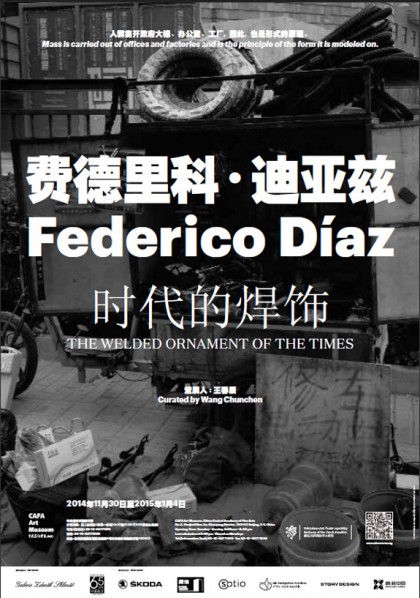
Curated by: Wang Chunchen
“The recorded ornament of motion arising from human activity may be the last image we will be able to use to read and reconstruct a diagram from a dying craft, mode of transportation, or even symbol of the times. As a result, the image created and transferred to the wall of the museum is the only and perhaps final recording of the Ornament of work and the period.”
Federico Díaz
His long-term project is based on observing the mass ornament, a reference to research by German philosopher Sigfried Kracauer, a member of the Frankfurt School – a sort of mapping of the specific characteristics of an individual’s movement within their own social unit in various parts of the world. Díaz believes each space is co-created by the distinctive nature of the individual’s movement, tiny distinctions in everyday activities. We all move through our urban environments, consume food, interact with the people in our surroundings, make phone calls, go shopping, point out things that interest us – but each of us does this in a completely unique character that arises from the characteristics of our space. Through his projects, Díaz creates a gradually expanding database of these tiny distinctions, which in the long run may prove crucial to understanding individual identity in an otherwise increasingly globalized world.
The central point of the composition comprises a space removed from time. A space where a mechanic is repairing a rickshaw. A mode of transportation that was prohibited from the streets of Beijing this year, as was the way in which rickshaws were made: welding conducted in small workshops.
A camera records the mechanic – specifically, six individual segments of his movement, his contact with material, the rickshaw he takes apart and puts back together again as if in an infinite loop.
A vast wall in the museum acts as a canvas for recording the action; an automated plotter system layers traditional ink on the surface, creating a permanent record of this ephemeral activity. Canvases and additional plotters are installed in five niches along the walls of the room. Everything is working at the same time. Man and machine. Layers of the real, the immediate and the recorded blend and merge. Everything extols the only reality of the times.
About Federico Díaz
* 1971, a visual activist of Czech-Argentinean descent, lives and works in Prague. Since the 1990s he has used new media to reveal the immaterial aspects of the everyday reality of our natural environment that are elusive to the primary human senses. Díaz’s work is typified by the language of algorithmically-generated art and systems art, increasingly more intense channels of direct communication with the viewer and the ability to follow his basic creative premise, which says that art is created without the touch of the human hand. He uses media and technologies as a socio-political catalyst of social changes.
He has exhibited at the Mori Art Museum Tokyo, Institute of Contemporary Arts London, Center for Art and Media Karlsruhe, Ars Electronica Linz, Massachusetts Museum of Contemporary Art, MoMA PS1, Miami Art Basel, the Florence Biennale and at the 54th Venice Biennale. In 2010 he represented Czech art at the 2010 World Expo in Shanghai. In 2007 he received the Premio Internazionale Lorenzo il Magnifico for digital media at the Florence Biennale.
Díaz is currently the Head of the Supermedia Studio at Academy of Arts, Architecture and Design in Prague.
About the exhibition
Duration: 30 November, 2014 - 4 January, 2015
Venue: CAFA Art Museum
Courtesy of the artist and CAFA Art Museum, for further information please visit http://museum.cafa.com.cn/en.




























